Equine
Seasonal
Cyclicity
 71-77 71-77

- The mare is seasonally polyestrous. She is like
a cat in that she has several cycles during a particular season.
Like the cat, the mare cycles during periods of long daylight
length.
- This insures that the mare will have foals at
the time of the year most conducive to foal survival, the spring.
Light year
- The mare is light responsive in that increasing
daylight causes cycles to start by decreasing melatonin.
See "Pathways to Pregancy and Parturition " for details on
sheep.
- Increasing light turns the mare on and
decreasing light turns the mare off.
- The important days to remember in the light
year are:
- Summer solstice - ~June 21, which is the longest day of the
year and the peak of natural breeding season;
- Fall equinox -
~September 21, when there is equal light and dark and the mares are
turning off in fall transition;
- Winter solstice - ~December 21, which
is the shortest day of the year and mares are in deepest anestrus;
-
Spring equinox - ~March 21 when there is equal light and dark and the
mares are in spring transition.
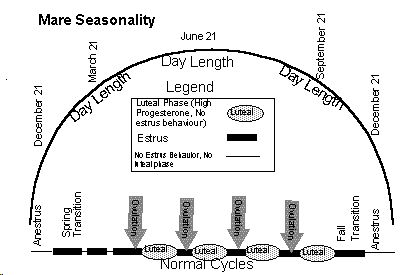
- Temperature may also influence the onset of
cyclicity as cyclicity may be in part regulated by a
neurotransmitter which is also involved in prolactin secretion.
Therefore, temperature is important in the control of prolactin (low
temp, low prolactin) and may therefore also affect
neurotransmitters.
- Reduction of the opioid inhibition of the
gonadal axis may also play a role in triggering the onset of the
breeding season.
- Normal cycles occur around the Summer solstice,
which is the natural breeding season.
Anestrus
- Anestrus in caused by the secretion of
melatonin, which is secreted in response to increasing darkness. The
melatonin inhibits GnRH, so the FSH and LH are low.
- Anestrus occurs around Winter solstice.
- About 80% of mares undergo anestrus.
- Mares in anestrus are passive to the stallion
advances.
- On rectal palpation the ovaries are small,
smooth, and inactive.
- The cervix and uterus are flaccid.
- Vaginoscopic exam reveals a cervix that is pale
and dry, and the cervix may even be open.
- The hormones are all at very low
concentrations.
- If the is nutrition poor, the mare may not
cycle back in the spring.
Spring transition
- The increasing daylight length in the spring
brings about a series of changes in the mare.
- Melatonin apparently
inhibits the production of GnRH in anestrus.
- As the melatonin
decreases, GnRH resumes secretion, and FSH and LH also increase.
- FSH
during anestrus is low and irregular, whereas during the cycling
season it becomes bimodal (through pregnancy).
- LH during anestrus is also at basal levels, but
increases to a normal pattern in cycling animals. LH production
however, lags behind FSH production.
- With increased FSH, follicles start to grow.
-
Most of these follicles are not steroidogenically competent so they
do not produce estrogen.
- They also do not ovulate. In fact, an
average of 3.7 waves of follicular development occur before the
first ovulation.
- After several waves, an estrogen producing follicle
finally develops and ovulates.
- The first ovulation of the season, on
the average, occurs about April 8 in Gainesville, Fla.
Signs
- During transition mares show irregular periods
of sexual receptivity, prolonged heats of 10-20 days, split heats,
and heats without ovulation.
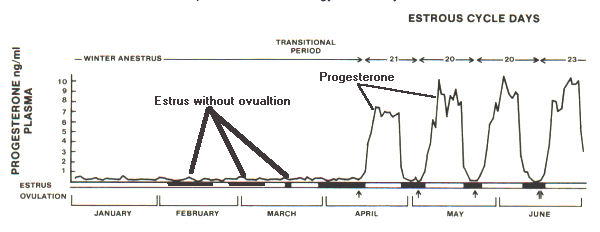
The dark bars represent signs of estrus. The arrows indicate
ovulations.
- The uterus may be histologically 1 cycle behind
the ovaries. In other words, the uterus may still look anestrus when
the mare starts cycling.
Findings
- The ovaries have follicles that grow and
regress until one is selected to ovulate.
- This occurs when a
follicle becomes steroidogenically competent and starts secreting
estrogen.
- The large follicles may persist on the ovaries because of
insufficient LH.
- The follicles are not cystic !!!
- There is no
treatment for this anovulatory receptivity. LH (or hCG) will not make a
transitional mare ovulate.
Treatment
- Nothing prevents transition.
- Regumate - (altrenogest is a progestagen that has no cross reaction with
progesterone. If given at a dose of 1ml/110 lbs for 14 days orally, it
shortens and eases the transitional signs, but does not eliminate
transition !!!! The net result is increased fertility earlier in
season.
- Why does it work? Regumate may induce LH
receptors on the follicles?????
- Regumate may cause cramps in women if it gets
on the skin.
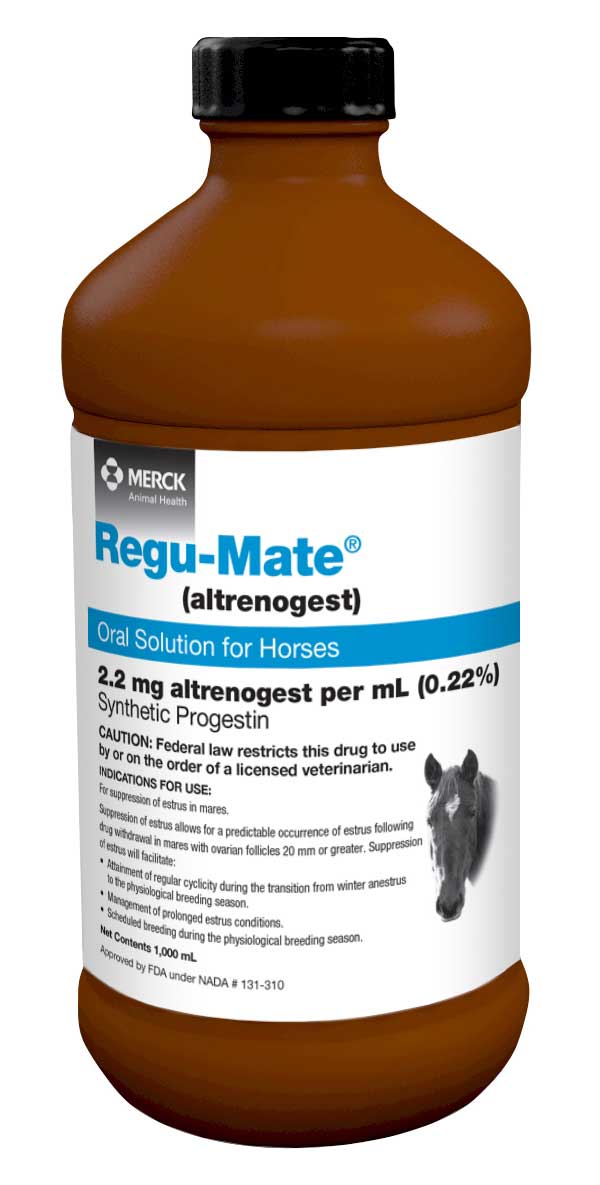 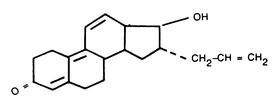
Progesterone in oil
- 100 mg/day for 7 days has similar effects as
Regumate.
Summary of transition.
- It is an odd mandatory period of:
- 'gearing up',
- prolonged heats,
- large follicles,
- anovulatory receptivity,
- low
fertility,
- uterine and ovarian findings that may not match.
- You
cannot predict which of the transition follicles will ovulate.
Fall transition

- Fall transition mirrors spring transition.
- You see:
- prolonged heats,
- irregular cycles,
-
large 'hung' or 'autumn' anovulatory follicles.
- These follicle
become atretic and the mare goes into anestrus.
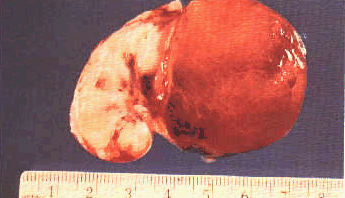
An 'autumn follicle' that has failed to ovulate during fall
transition.
- This is caused from the low LH release because
melatonin is taking its grip again as the day length decreases.
- There is no treatment for fall transition.
Induction of
cycling
- Why induce a mare to cycle out of her normal
breeding season?
- Man, in our wisdom, has decided that birthdays
for all horses in the Northern Hemisphere are Jan 1.
- This man made birthday is to simplify age
decisions in racing, but really complicates breeding!
- Since the birthday is Jan 1, owners want the
mares to foal as close to, but not before, Jan 1, so they have
larger foals at the sales. The larger foals look better and are more
mature when they start their racing careers. These animals do not
produce any better in their life time though.
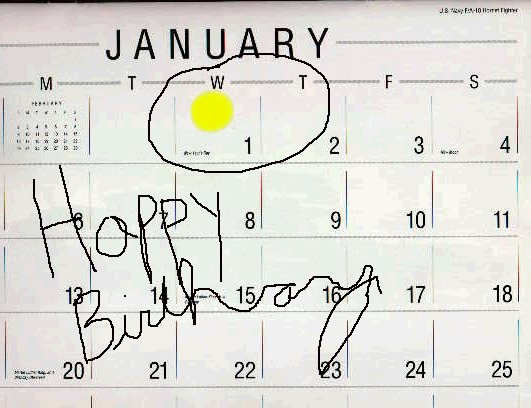
Artificial light supplementation
- The addition of artificial light mimics the
seasonal changes normally seen in the Spring.
- You must start no later than Dec. 1 (about 2
months before you want cycles to begin)
- 10 foot candles or 1 lux is sufficient. This is
equivalent to a 100 watt bulb in a 12X12 box stall or two 40 watt
fluorescent bulbs / box stall.
- You can use a 35 mm camera to assess light
intensity. Set the ASA to 400 and the shutter speed to 1/4 second,
place a styrofoam cup diffuser over the lens and set the aperture
for the correct exposure. The f stop should be about 10 or greater
in order to ensure sufficient light.
- You need a minimum 14.5 hr. light to start
cycles.
Methods
- It is imperative that light be added at the end
of the day, not the beginning.
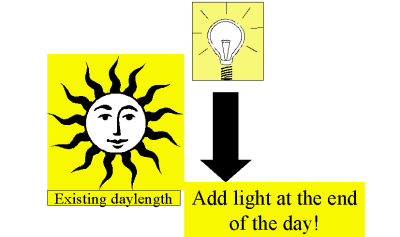
- You can increase the light 30 minutes/week to
16 hours a day. This is harder, but it keeps the interest up and the
bulbs get checked more often.
- You can just abruptly start supplying 16 hours
of light a day. It works just as well and is easier.
- The pulse method uses a 1 hr pulse of light
after 9.5-10.5 hours of dark. Quite a chore!
- Transition still occurs, so be ready for it!
- If you try to keep the light constant all year,
the mare may go anestrus anyway, because mares need some rest
period.
- If you supply 24 hours of light, it will
actually delay the onset of cycling.
GnRH supplementation
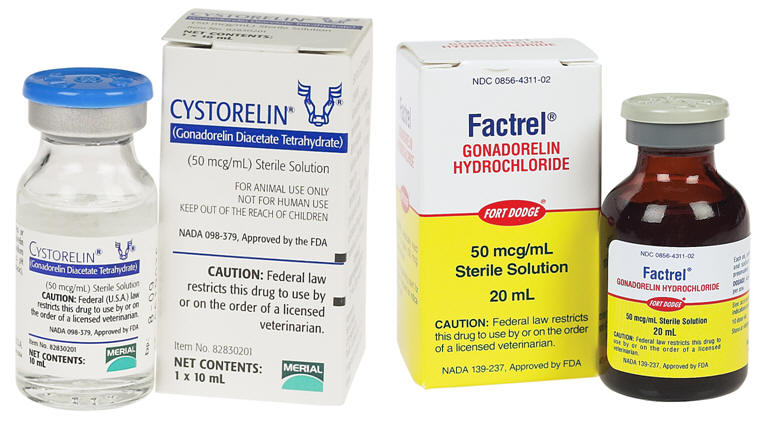
- Experimentally, 100 mcg /hour for eight days at
a constant infusion caused most mares to start cycling. This method
is cost-prohibitive now. Experiments with injections of 40 mcg every
12 hours 28 days vs. implants (Buserelin implants released
100mcg/day 28 days) showed that 0/15 of the controls ovulated by 28
days, whereas 7/15 injections and 9 /15 implants did. Although the
implants group retrospectively had greater LH before the study
began.
- 100 ug/hr for 2 weeks using osmotic pump hastened first ovulation by up to 60 d (if given in Feb mares stopped cycling) - ISER 2010
Dopamine D2-antagonists
- Dopamine
- Effect on gonadotropin release is
unclear
- Some studies indicate changes,
others do not
- Antagonists may act directly on ovary,
rather than by hypothalamic pituitary axis
- GnRH is inhibited by dopaminergic
neurons acting directly on GnRH neurons
- If given during anestrus the effect is
not as great as if given during transition or if mares have been
exposed to extended photoperiod.
- Domperidone
  
- 1.1 mg.kg PO SID
- Transitional mares ovulated 12-22
days after treatment started
- Deep anestrous mares took longer
to ovulate (50-60 days)
- Temperature may also play a role -
cold winters inhibit
- Pre-treatment with 150 mg ECP 10 d before 3 g injectable in biospheres increased prolactin - (ovulation????) - ISER 2010
- Sulpiride
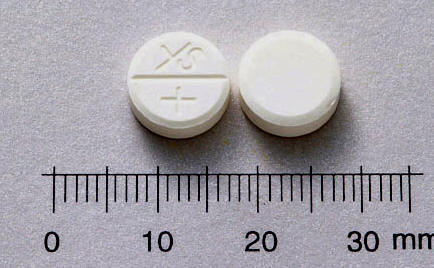 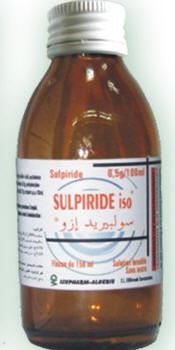
- 1 to I.5 mg/kg IM SID
- Same problems as domperidone
- Recent study showed this to be more effective than domperidone
e
FSH
- CSU study 2004 - Journal of Equine Veterinary Science,Volume
24, Issue 1, January 2004, Pages 37-39
- 12.5–mg of purified eFSH (Bioniche Animal Health USA, Inc.,
Athens, Ga) intramuscularly twice daily for a maximum of 15
consecutive days
- None of the untreated control mares ovulated during the
15-day observation period.
- One mare in the control group developed a luteinized,
unruptured follicle at 16 days but did not ovulate until day 84.
- Mean interval from onset of the study to ovulation
- Nine control mares was 39.6 ± 17.2 days, an average of
1.3 ± 0.5 follicles ≥35 mm before ovulation and the
ovulation rate for the first cycle of the year was 1.0 ± 0.0
follicles.
- Eight of the 10 mares (80%) treated with eFSH developed
follicles and ovulated during the 15-day observation period.
Average interval from onset of treatment to ovulation was
7.6 ± 2.4 days. Treated for an average of 5.2 days
and ovulation occurred at an average of 2.4 ± 0.6 days after
administration of hCG.
- Five of the eight mares in the treated group
developed two or more follicles ≥35 mm in response to
eFSH treatment.
- The average number of large (≥35 mm) follicles in
mares treated with eFSH was 3.3 ± 2.2, and the average
number of ovulations was 2.5 ± 1.7.
- Two of the 10 mares treated with eFSH developed
large (≥35 mm) follicles that regressed without
ovulation after hCG treatment. These two mares
eventually ovulated 20 and 41 days, respectively, after
the onset of the study.
Other
- Accupunture at LSU - no effect on days to first
ovulation
- Follicular Aspriation at LSU - may hasten first
ovulation. One trial yes, one trial no.
- Long acting progesterone to mares with 20-25 mm
follicles in late transition- hastened ovulation in
10-24 days (83% vs 25%) - ISER 2010
|